|
Magnavox During World War Two
Fort Wayne, IN
1911-1975 Consumer Electronics
1911-1995 Military Electronics
This
page updated 4-6-2022.
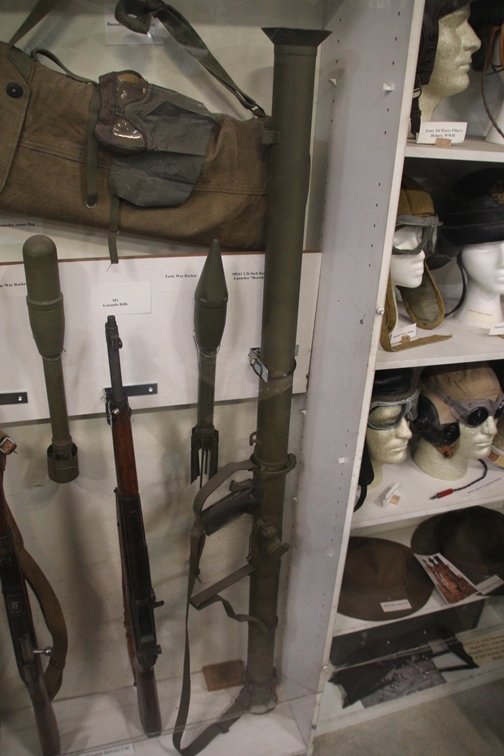
The tall stove tube device on display at Robert's Armory in Rochelle, IL
is an M9A1 2.36 inch rocket launcher. It is most commonly known as
a bazooka and was designed as a man-portable anti-tank weapon.
This weapon may seem unrelated to an electronics company that was known
for its radios before World War Two and its television sets after the
war. However, the M9A1 and the earlier M9 bazookas came equipped
with Magnavox T6 magneto firing mechanism. Author's photo.
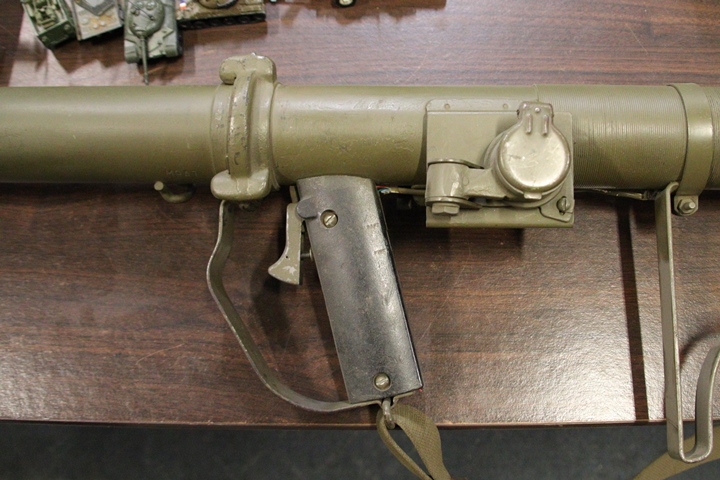
The Magnavox T6 magneto firing system was located in the operator's
handle. Author's photo.

This M9A1 is on display at the USAF Armament
Museum. Author's photo added 4-6-2022.
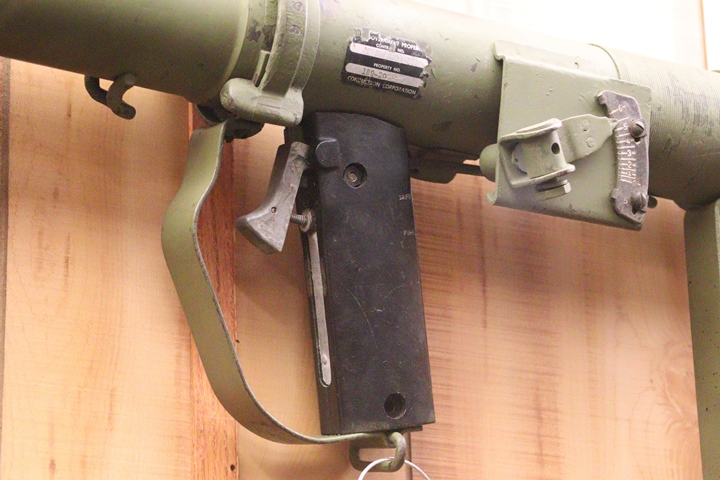
This photo gives another good view of the
Magnavox T6 magneto firing system. Author's photo added 4-6-2022.
The earlier M1/M1A1 bazooka used a battery
to ignite the rocket that the weapon fired. Problems arose almost
immediately with the early bazookas when they were introduced into
combat in North Africa in 1943. The batteries, if they were
available, were not popular because they were subject to discharge and corrosion in wet weather. The Magnavox T6 magneto firing system was more
dependable and not reliant on batteries.
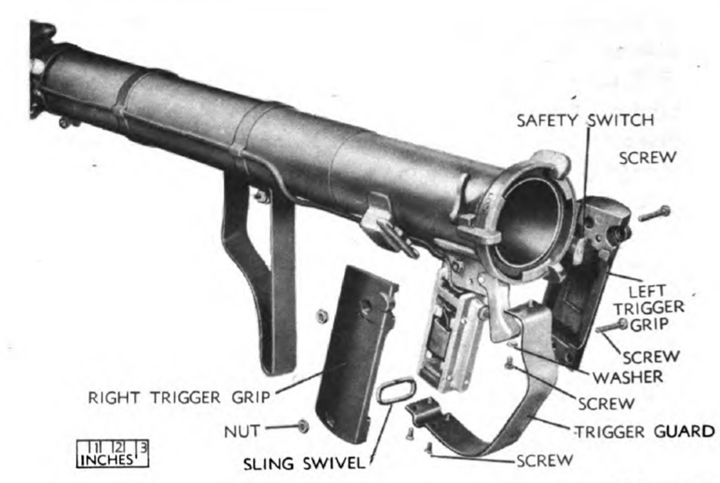
This is an exploded view of the firing
mechanism. Image from TM9-294.
The information below is a quote from
TM9-294:
"The firing mechanism is housed within the
trigger grips and is secured to the trigger grip support on the under
side of the rear barrel. It consists of a magneto, trigger, and
safety mechanism. The magneto consists of several magnets housing
a coil of wire which in turn houses a steel armature. When the
trigger is squeezed, the armature moves in the coil and generates
sufficient current to ignite the rocket. The safety switch is
located in the rear side of the left grip. When the safety switch
is manually moved to the "SAFE" position, the coil is shorted out of the
electric system so the no current reaches the rocket. The magneto
generates current when the trigger is squeeze and also when it is
released."
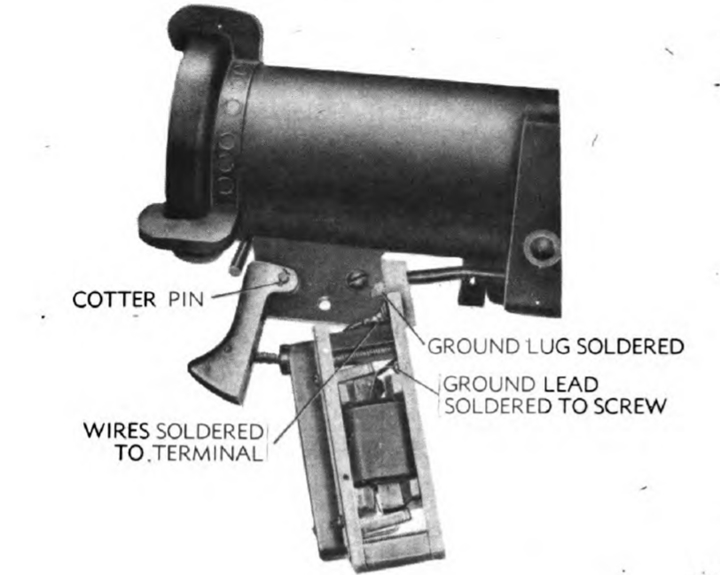
This is the left-hand view of the unit.
Image from TM9-294.
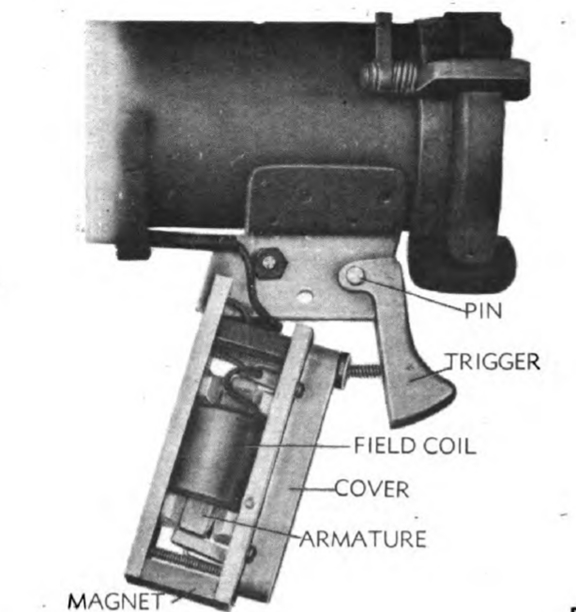
The right-hand view shows the trigger, field coil, armature, and
magnet. Pulling the trigger creates a current in the field coil as
the armature moves through it. The current flows to the rear of
the weapon where it ignites the rocket in the tube. Image from
TM9-294.
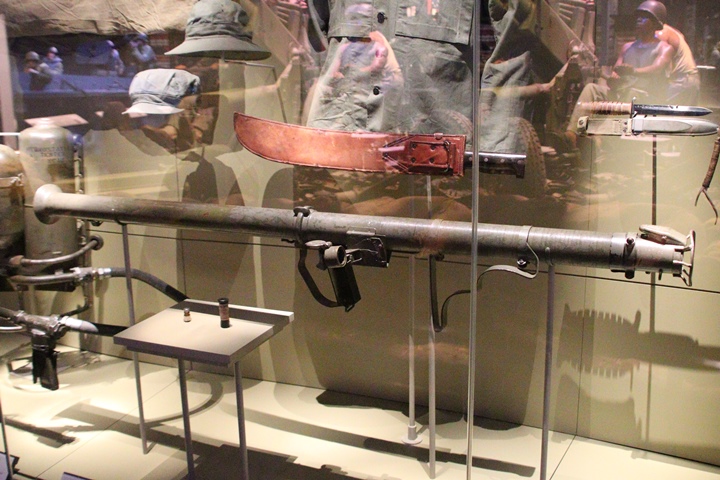
This M9A1 is on display at the National
Museum of the United States Army in Belvoir, VA. Author's photo.
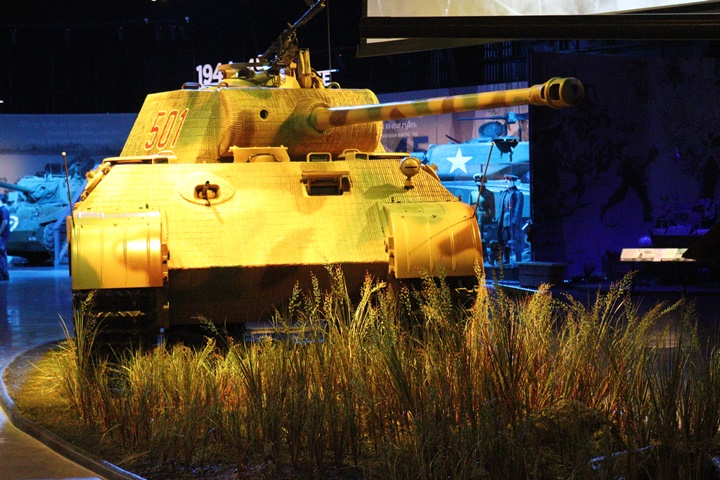
The approach of a German Panzer V Panther
Ausf. A could spoil an American infantryman's whole day! However,
if he had a bazooka with a Magnavox firing mechanism that fired reliably
every time, he had a weapon that helped to even
up the odds against the 49-ton tank. Author's photo taken at the
American Heritage Museum.
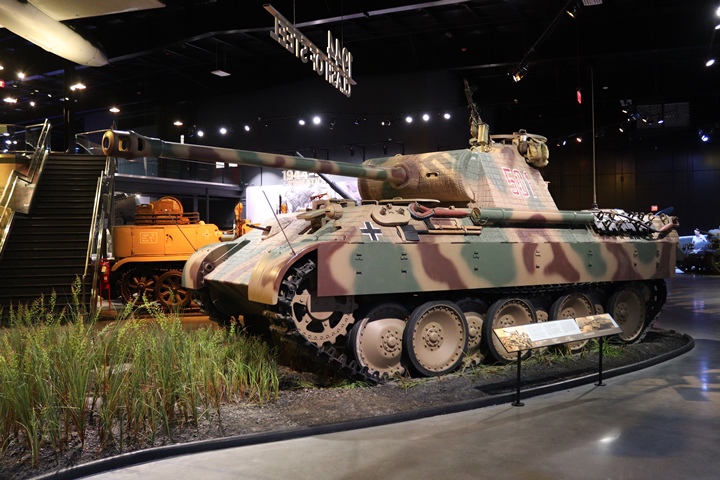
The infantryman with a bazooka would work
his way around to the side or rear of the tank, as the 2.36 inch rocket
would not penetrate the front armor of the Panther. The
infantryman would aim for more vulnerable parts of the tank like
the tracks and wheels, the area between the tank body and its turret, or
the engine. Author's photo taken at the American Heritage Museum.
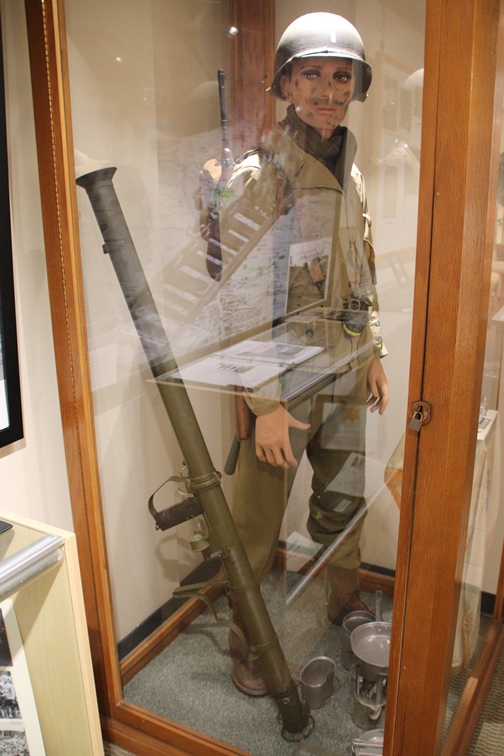
This M9A1 bazooka, equipped with a Magnavox T6
firing mechanism, is on display at the Camp Blanding Museum in Florida.
Author's photo.
Magnavox was started in 1913 in Napa, CA as
the Commercial Wireless and Development Company. In 1915 the
company invented the loudspeaker which was named Magnavox.
Magnavox is Latin for great voice. A year later in 1916, it
invented the first record player tone arm and automatic pickup. In
1917 the Commercial Wireless and Development Company merged with the
Sonora Phonograph Distributor Company and became the Magnavox Company.
After a relocation to San Francisco and then Oakland, the company moved
to Fort Wayne, IN to be located nearer to its main markets and to be close
to the magnet wire companies in the area. Magnet wire was a large
part of the construction of a loudspeaker.
After World War Two, Magnavox purchased a
cabinet plant in Greenville, TN. Then several years later,
Magnavox built a
plant to manufacture television sets in the same town. In 1960 it
built a second plant in Greenville, TN, which was the world's largest
plant for manufacturing television sets. Like other
American consumer electronics companies, it began to lose market share
to foreign imports. In 1975 it became a wholly owned subsidiary of
North American Phillips Development Company. While the name would
still be used as a brand name in consumer electronics through the early
1990s, Magnavox as an individual company was gone.
Magnavox Electronics Systems, which specialized in military products,
continued operations as an individual company headquartered along I-69 on the south side of Fort
Wayne until it was purchased by Hughes
Electronics in 1995. So ended the last independent Magnavox
company that began in 1911.
Magnavox World War Two Products:
Machine gun solenoid triggers controls, head set assemblies, antenna
reels, loudspeakers, microphones, amplifiers, radios, power supplies,
interphones, capacitors, noise filters, phone amplifier kits, telephone
installation kits, remote control kits, bomb arming controls, aircraft
components, film projectors, gun components, sound equipment, SCR-291
radio direction finders, and 257,776 T6 electric trigger controls for
the M6/M9A1 2.36 inch rocket launcher described above.
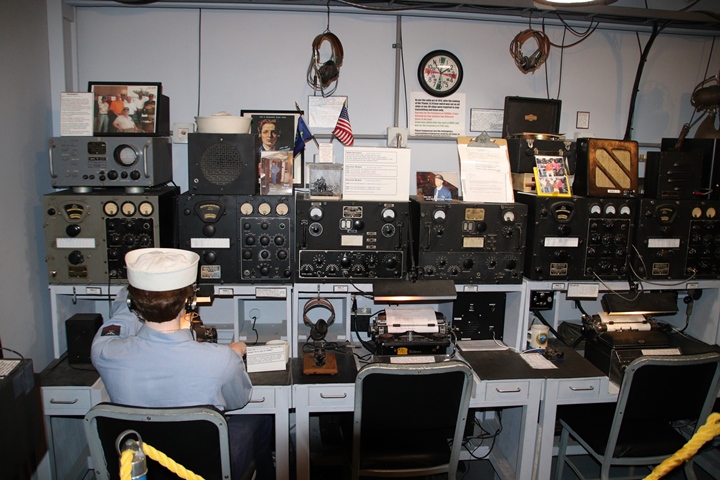
The next two photos show the reproduction of
the radio shack in the USS Indianapolis that is on display at the
Indiana War Memorial Museum in downtown Indianapolis. The photos
depict all of the various receivers in the USS Indianapolis. Author's
photo.
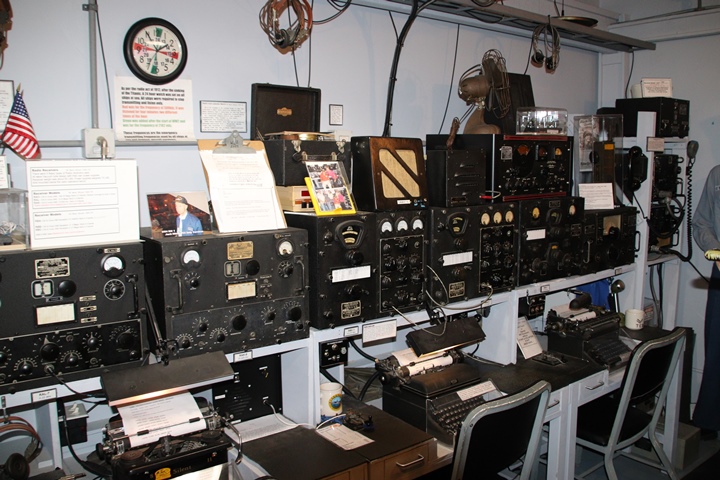
With the exception of three receivers, the
remaining radios were all built by RCA. RCA was the main provider
of radio receivers used on U.S. Navy ships in World War Two. Author's
photo.
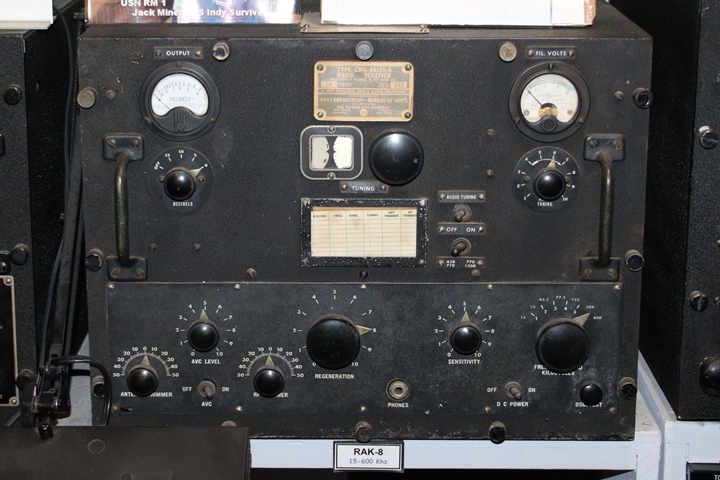
One of the non-RCA radios on display is this
Magnavox-built Type CMX-46155-A long band receiver with frequency range
of 15 to 600 kilohertz. The CMZ-46155 with the associated
CMX-20131 power supply, also built by Magnavox, was denoted as the RAK-8, which was an RCA design.
Due to production constraints at RCA, Magnavox was chosen to build the
RAK-8 radio. Author's photo.
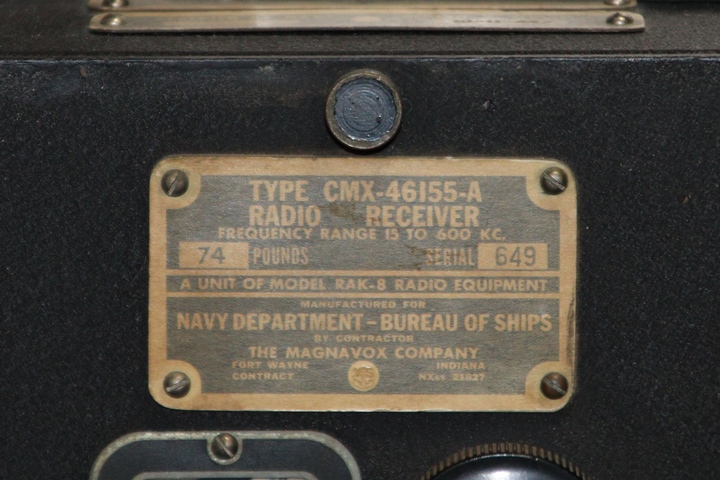
This RAK-8 is serial number 649. The highest
serial number I have found is another RAK-8 with the serial number 2318, indicating Magnavox
built at least that many. Author's photo.
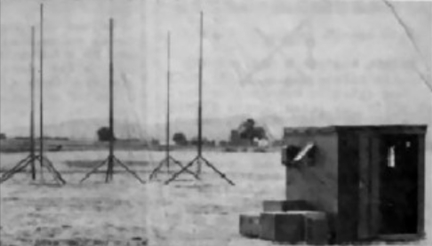
Magnavox made an unknown number of SCR-291
aircraft direction finders, which consisted of a BC-1147 receiver
and associated equipment.
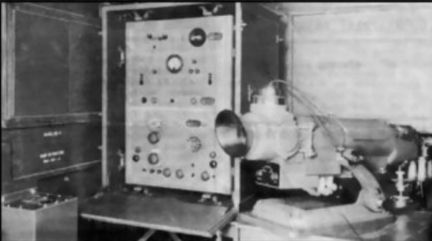
There was a total of 1,043 units built by all manufacturers between
1943 and 1945.
The Magnavox Fort Wayne Plant:
When the company moved to Fort Wayne in 1931, it built a plant located on
what was then named Bueter Road on the industrial east side of the city.
Since that time, the name of Bueter Road has been changed to Coliseum
Boulevard. Also, the former Magnavox plant in this location no
longer exists and the land has been repurposed with a new, modern
structure.
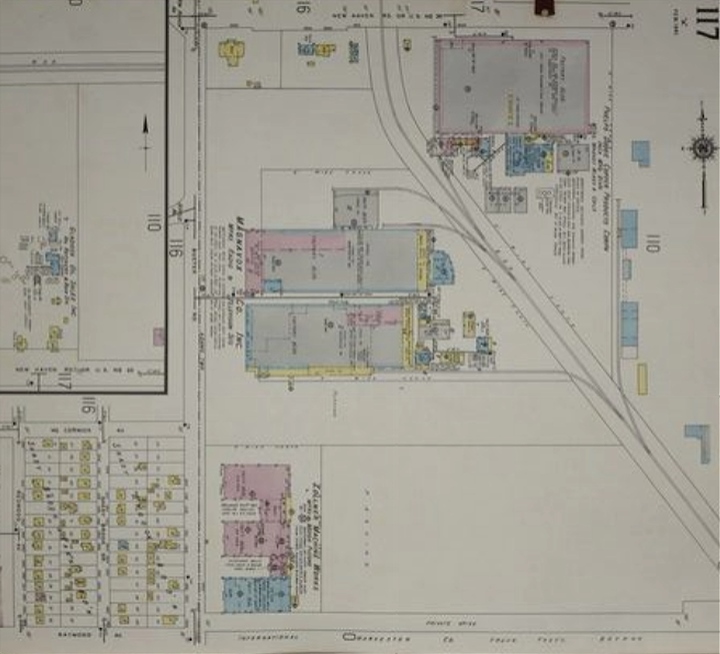
This 1951 Sanborn map shows the Magnavox
plant in the middle of the map. The Phelps Dodge magnet wire plant
was to the northeast, across the
railroad tracks. At the
bottom of the map, it notes the location of the north side of the large
International Harvester truck plant. The Studebaker plant that
made parts for R-1830 radial aircraft engines used on B-17 bombers was not shown on the map because
it was outside the Fort Wayne city limits.
It was directly to the east of Magnavox across the railroad tracks and
still exists today. Also not shown in this section of the map was the location of the
Farnsworth Television and Radio Corporation Plant to the southwest on
Pontiac Street.
One of the reasons Magnavox moved to
Fort Wayne was to be near the several magnet wire manufacturers in the
city. It couldn't have chosen a better location which put it right
next door to Phelps-Dodge, which was one of three magnet wire companies
in Fort Wayne. There was also Essex and Rea. The Phelps
Dodge plant is now the headquarters for Rea Magnet Wire.
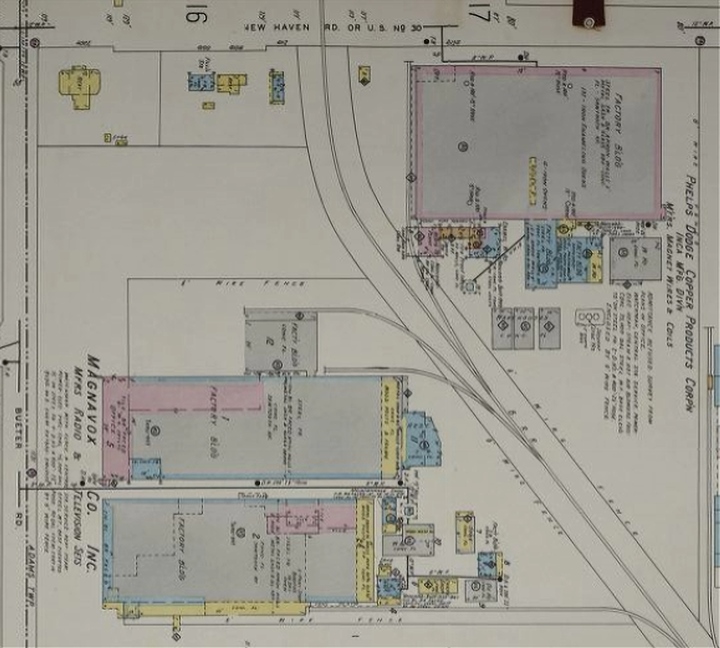
This image shows Magnavox and Phelps Dodge.
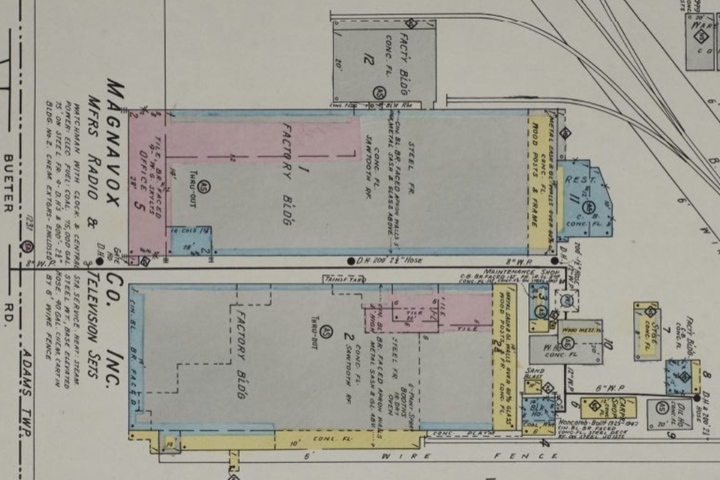
This image shows Magnavox.
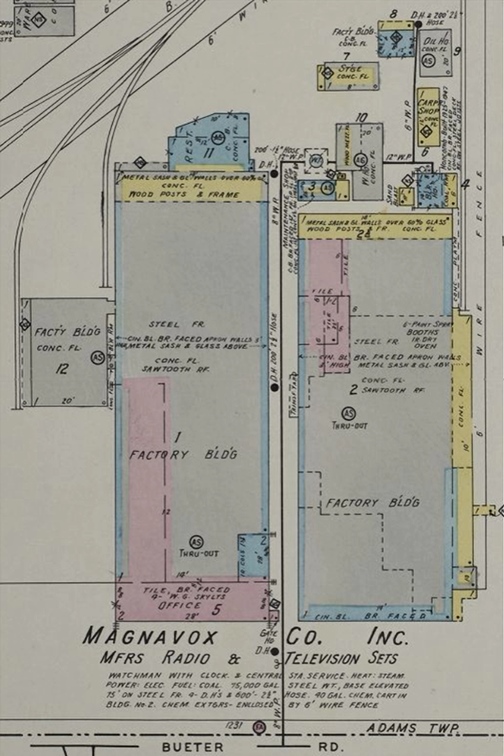
This turns the map 90 degrees.
Magnavox had two buildings at this location.
|




















